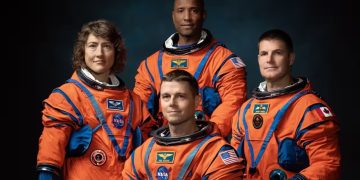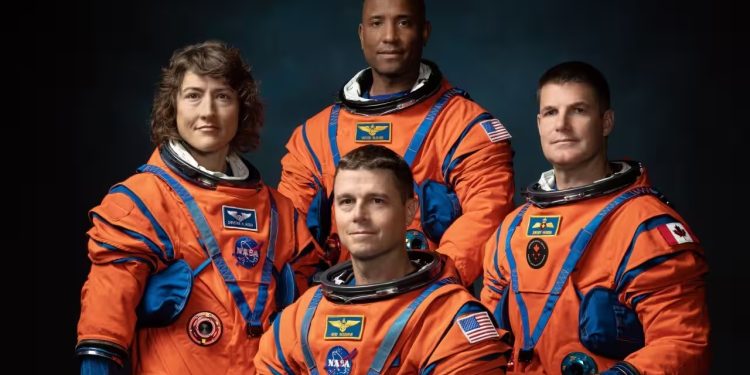By John Ikani
NASA has announced the crew for its upcoming Artemis II lunar mission, and it’s a historic lineup.
Among the four members selected, two will make history as the first woman and the first Black astronaut to be assigned to a lunar mission.
The Artemis II mission, set to take place as early as next year, will mark the first crewed voyage around the moon in over 50 years.
Christina Koch, an engineer who already holds the record for longest continuous spaceflight by a woman and was part of NASA’s first three all-female spacewalks, was named as a mission specialist.
She will be joined by Victor Glover, a US Navy aviator, and veteran of four spacewalks, who NASA has designated as the pilot for Artemis II.
Glover will be the first Black astronaut ever to be sent on a lunar mission.
Also joining the team are Jeremy Hansen, the first Canadian astronaut ever chosen for a flight to the moon, as a mission specialist, and Reid Wiseman, named as mission commander.
All three NASA astronauts chosen for the Artemis II mission are veterans of previous expeditions aboard the International Space Station.
In December 2022, NASA’s powerful next-generation mega-rocket and its newly built Orion spacecraft successfully completed the inaugural launch on an uncrewed test flight lasting 25 days, marking the completion of the kickoff Artemis I mission.
The objective of the 10-day Artemis II journey around the moon and back is to demonstrate that all of Orion’s life-support apparatus and other systems will operate as designed with astronauts aboard in deep space.
The mission will venture some 6,400 miles beyond the far side of the moon before returning, marking the closest pass humans have made to Earth’s natural satellite since Apollo 17, which carried Gene Cernan and Harrison Schmitt to the lunar surface in December 1972.
If Artemis II succeeds, NASA plans to follow a few years later with an unprecedented landing on the moon’s south pole with astronauts, one of them a woman, on Artemis III.
Further crewed missions would follow about once a year.
Compared with the Apollo program, born of the Cold War-era US-Soviet space race, Artemis is a broader-based program, enlisting commercial partners such as Elon Musk’s SpaceX and the space agencies of Canada, Europe, and Japan.
It marks a major redirection of NASA’s human spaceflight ambitions beyond low-Earth orbit after decades focused on flights to and from the space station.



































